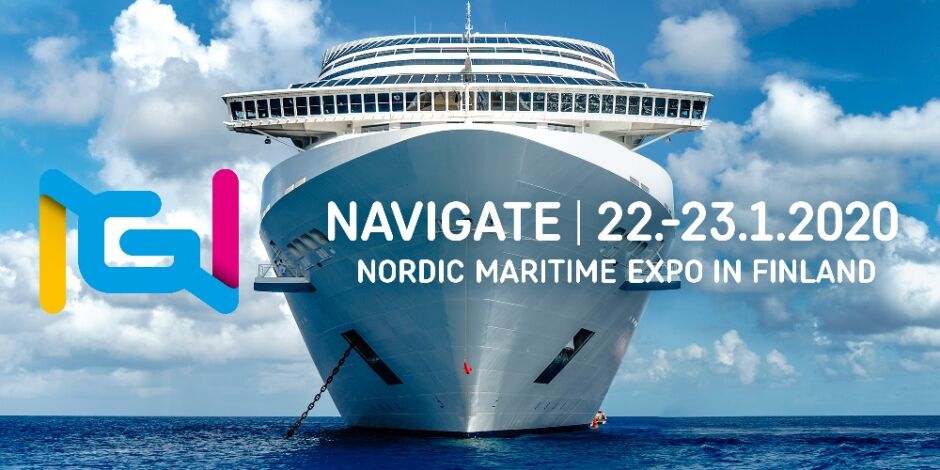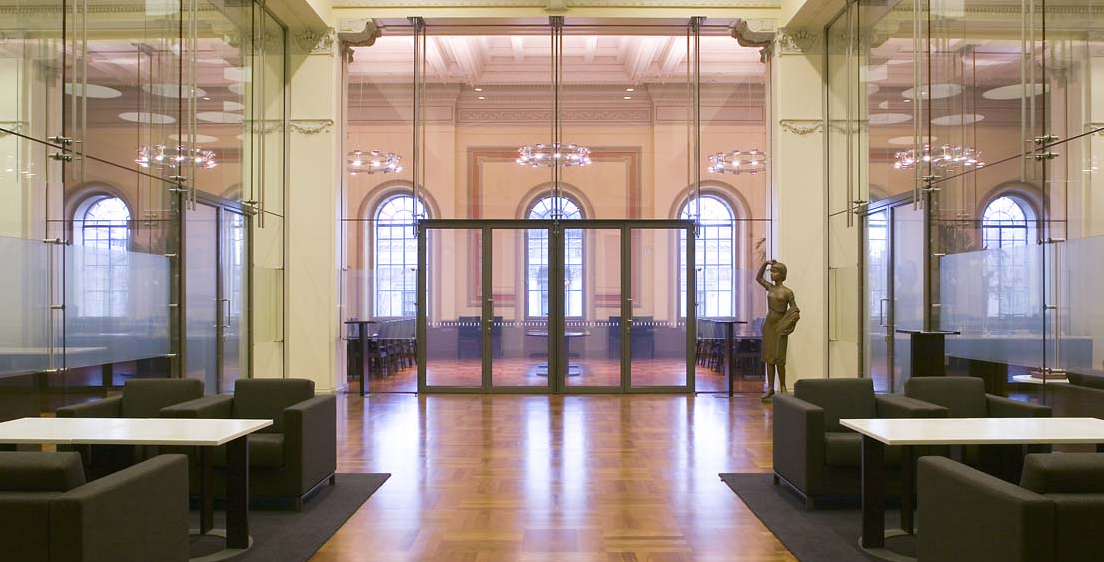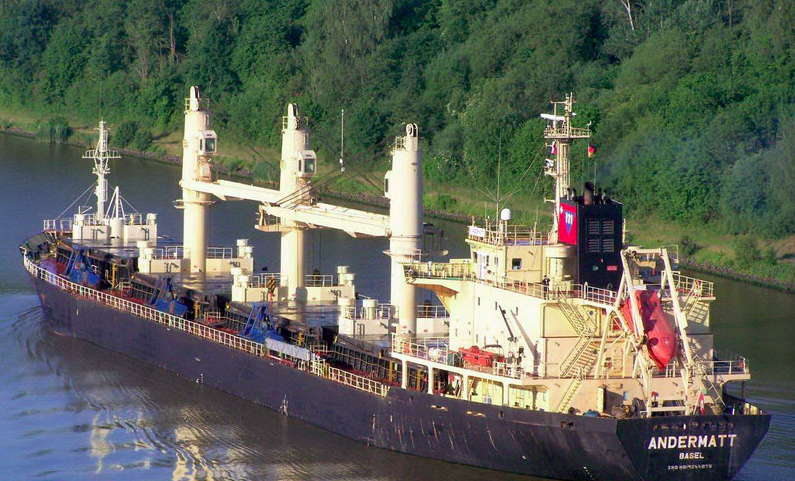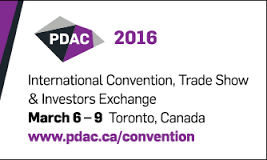Helsinki/Turku, January 21st, 2020/RLU
Maritime Trade Fair, Turku 2020
NaviGate 2020 is an international Gathering for professionals, organised at the Turku Fair and Congress Centre (Finland) from 22nd to 23rd January 2020. The last event in May 2018 brought together around 200 companies showcasing their expertise. The expo attracted 1271 visitors and totally almost 2500 professionals met face to face.

What to expect at NaviGate 2020 in Turku?
Future of Knowledge and Know-how
Intelligence Hunt 6 is the only shipping and maritime industry endeavour that pairs innovative students with the industries’ corporations to look forward to new sustainable and environmentally friendly solutions.
Companies and potentially future employees are invited to come together, interact and present their skills, competences, personal and entrepreneurial projects for possible best collaborations in the next future.
NaviGate 2020 is inviting top level speakers from across the region who have been working with students team to sort out and address some key bottlenecks and open them towards opportunities in shipping and logistic as well as in port operations.
Inspiring Experts from the professional maritime supply chain, as well as from Case Companies will present the challenges, chances and opportunities of the maritime industry. The trade fair brings together shipowners and operators, harbour terminal operators and regulators, and importantly the next generation of the maritime industry into one room to collaborate and discuss the challenges and viable solutions for the years to come. Increased participation from the leading Finnish and Nordic companies and maritime professionals is expected!
The Finals of the Intelligence Hunt 6 project will take place January 22nd at the NaviGate 2020. The teams of inspired young next generation, students from European universities as well as their corporate supporters will pitch their ideas to the audience and an independent panel of experts, Intelligence Hunt 6 Jury.
The maritime industry in Finland is sharply focused on environmental and sustainability issues. Not often, but here and there, it appears to get forgotten, that shippers, cargo owners and freight forwarders have their own environmental, sustainability and transparency standards and demands alongside ever-present commercial highly demands.
NaviGate 2020 offers die welcomed opportunity for a worthily dialogue between all stakeholders of the maritime industries and their customers.
Intelligent Hunt and NaviGate 2020 invited for the event specialists such Pekka Lettijeff, CEO President Tylö Helo Group, Johan Eözes, BU Director Ahlers Trade Services and Dr Professor Rolf Neise, to speak from the perspective of the shippers. Ship-owners are largely represented on the discussions’ podium. Tallink Silja, ESL Shipping, Stena, DFDS, Finnlines Grimaldi Group Company and Stena will present their views on the current development in the maritime business and their outlook for the industry and the dearly needed efficient measures to be implemented in the future, in order to enhance profitable and sustainable growth as well.
NaviGate 2020 attracts a diverse range of visitors from the maritime industry, including subcontracting engineering, ports, shipyards, shipping companies, ship equipment suppliers, logistic companies and maritime universities.
The particular attention of NaviGate 2020 and its leading networking, and matchmaking struggle is digitalisation, green shipping in the marine industry and logistic.
Finland plays a major role in international maritime industry. Its recognizable results in the fields of innovation and problem solving in most challenging maritime sectors. With a deep the sense of this industry, Finland became with the time the cradle to a growing number of innovations, promoted and spread the innovative digital and sustainable collaborations among the national and international companies, reshaping the maritime industry worldwide for an environmental friendly destiny.
Finland’s smart and environmentally friendly maritime solutions catch the attention of a variety of supplier, customers and investors. The Finnish maritime industry is founded on world-class expertise and innovations. Finnish Shipping companies are leading the way towards greener shipping by using LNG and waste based biodiesel fuels.
Digitalisation took a pivotal role in the challenging field of maritime. New digital skills empowered maritime companies with a wide variety of solutions and services that help to increase their operational efficiency and optimise processes. Nevertheless, they inspired new business models and created new value overall.
The maritime digitalisation sets Finland as the world’s first autonomous maritime ecosystem One Sea. This kind of ecosystem specifically characterises Finland’s status as the international forerunners in autonomous and remote ships, which will play a key role in the future of the maritime industry.
The largest shipbuilding subcontractor network in the world, with over 1000 suppliers, supports Finland’s strong bedrock in the maritime sector.
The internationally awarded high reputation of Finnish maritime network’s expertise covers icebreakers and ice navigating vessels, to cruise ships and offshore solutions as well as port technology.
Finland, described by Forbes as the most digital country in 2018, has embraced the ideals of a clean efficient shipping and supply chain, and the programme of activities during NaviGate 2020 more than reflect this.
Viewpick on the Program NaviGate 2020 Turku
(turunmessukeskus.fi/…ram/navigate-program
Maritime Future – Changing Business Environment, MARKKU MYLLY, Senior Adviser, SeaFocus
Future know-how in cruising business, MARGUS SCHULTS, CEO of Tallink Silja Oy, Finland
CASE: Global Megatrends and Their Effects on Cruising and on the Technologies Used at Cruise Ships, MEYER TURKU. Company representative: KARI SILLANPÄÄ, Head of Research and Development, Meyer Turku Oy
ROLF NEISE – Shipper’s Voice: Case Study Blue Chip and a Carrier. Rolf Neise is a freelance consultant supporting multinational companies and a lecturer at the International School of Management (ISM). In his presentation in IntelligenceHunt Company and Student competition, Rolf Neise will emphasize today’s shippers’ needs and what they require from the carriers.
CASE: Cargo Flows of Circular Economy and Sustainable Port Operations – Opportunities and Challenges, PORT OF NAANTALI and STEVENA. Company representatives: YRJÖ VAINIALA, Port Director, Port of Naantali Ltd and MARKKU MÄKIPERE, Managing Director, Stevena Ltd
Student Team Meri Voyagers
JOHAN ELZES – Growth in the Complex Markets – True Stories of Customer Innovation. Johan Elzes is a Dutch national who has been living and working in Russia since 2011. He is a Director at Ahlers of a Business Unit Trade Facilitation & After Sales Services, which supports international premium brands to develop their business in the complex markets. In his presentation in the IntelligenceHunt6 Company and Student competition, Johan Elzes will bring the public to a journey of “Growth in the Complex Markets – True Stories of Customer Innovation”.
CASE: Infobridge – a Quest for More Data-Driven Vessel Operations and Technical Management, ESL SHIPPING LTD. Company representative: KIRSI YLÄRINNE, Business Unit Manager, ESL Shipping Ltd
Student Team Innovation Crew
BLASCO MAJORANA – Sustainable Commercial Shipping
◊ more about Finland in short ◊
Marine Industry in Finland
Facts & Figures
1 000 companies
Employs 30 000 people
Annual turnover 8 billion €
Export share: over 90
In 2019 were ten shipyards in Finland: Meyer Turku, Helsinki Shipyard, Pori Offshore Constructions, Rauma Marine Constructions, Turku Repair Yard in Naantali, Uki Workboat in Uusikaupunki, Western Shipyard in Teijo, Laitaatsilta Shipyard in Savonlinna, Suomenlinna Shipyard and Suomenlahti Shipyard. Most of the shipyards focus on new buildings. The Turku Repair Yard executes repair projects only.
Finnish equipment manufacturers manufacture many famous products such as an environmentally friendly LNG fuelled engine aimed at conserving the environment and the most advanced propulsion system for energy efficiency. Other Finnish innovations include the Hi-Fog fire protection system, which extinguishes fires with water mist.
Some of the most luxurious public spaces in cruise ships are made in Finland. Finnish companies have the know-how to build complex areas in cruise ships: Oasis-class cruise ships have the first moving bar at sea. Finnish turn-key companies are able to deliver complete spaces for vessels, such as fully equipped kitchens, stairways, restaurants and cabin modules.
Finnish design offices offer a wide variety of consulting, design, research and development services as well as software for the design and operation of ships. In addition, they provide feasibility studies and developing tools using the latest technologies.
Offshore: Finland has over 40 years of experience in completing enormous oil platforms. The majority of the floating, deep-sea Spar type oil platforms are designed and constructed in Finland. Besides that, the Finnish offshore industry designs and manufactures offshore equipment related to wind power and many types of supply vessels.







 The keynote session is dedicated to the role of renewables in driving the competitiveness of mines. Even with lower oil price, energy remains very expensive in many mining regions. Production costs are also rising due to the elevated power demands from falling ore grades and the increasingly remoteness of mining operations. Rising energy costs are hampering the competitiveness of the resource sector and the prolonged commodity price low has intensified the focus on driving down and controlling power costs. In addition, the sector is being challenged by increased social opposition and regulatory demands which can be addressed by alternative energy choices. This keynote session will look at how renewables can increase the effectiveness of the resource sector by delivering affordable and sustainable power options.
The keynote session is dedicated to the role of renewables in driving the competitiveness of mines. Even with lower oil price, energy remains very expensive in many mining regions. Production costs are also rising due to the elevated power demands from falling ore grades and the increasingly remoteness of mining operations. Rising energy costs are hampering the competitiveness of the resource sector and the prolonged commodity price low has intensified the focus on driving down and controlling power costs. In addition, the sector is being challenged by increased social opposition and regulatory demands which can be addressed by alternative energy choices. This keynote session will look at how renewables can increase the effectiveness of the resource sector by delivering affordable and sustainable power options.

